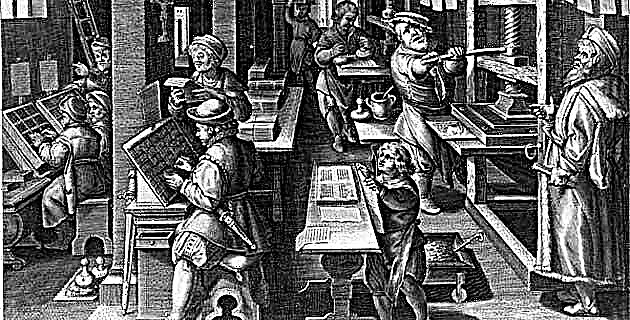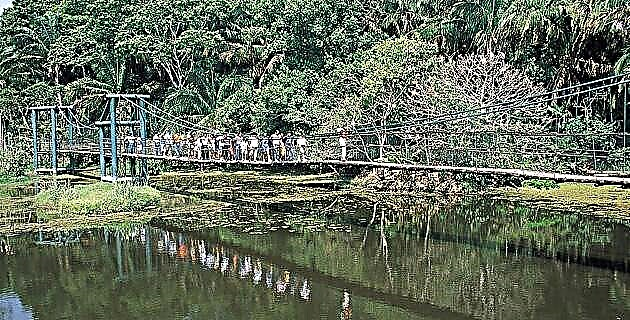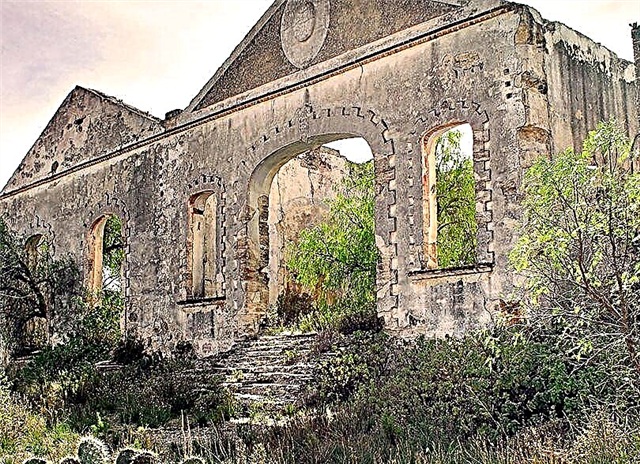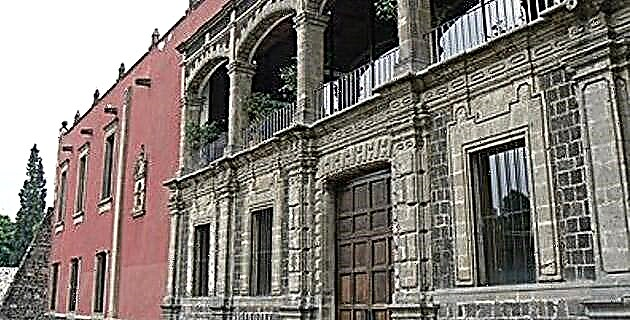
Tracking down a book and rescuing or rebuilding an entire library is a fantastic adventure. Our current collection is made up of the libraries of 52 convents of nine religious orders and they constitute a small but significant part of the total kept by the National Institute of Anthropology and History.
The origin of these convent libraries was due to the desire of the first Franciscans to give a higher education to the natives, as well as to finish training the religious themselves who came from Spain with minor orders.
An example of the first was the College of Santa Cruz de TlatelolcoIn addition, the desire of some Franciscans to learn about indigenous beliefs, belief and interest is expressed, culminating in many cases in humanistic rescue undertakings. Tlatelolco was a fruitful bridge for this approach. San Francisco el Grande, San Fernando, San Cosme, among others, were houses where many Franciscans received training who completed their studies until they professed in the order.
In these schools, for the natives, and in the convents, for the novices, a monastic regime was also maintained with classes in Latin, Spanish, grammar, and philosophy, combined with catechism and liturgy. To support these studies, the libraries or bookstores, as they were called at that time, were nurtured with works that made available to students fundamental issues and aspects of the cultural legacy of the Old World.
The inventories record works of the Greek and Latin classics: Aristotle, Plutarch, Virgil, Juvenal, Livy, Saint Augustine, of the Church fathers and of course of the Sacred Scriptures, in addition to catechisms, doctrines and vocabularies.
These libraries, since their inception, were also nurtured with the contribution of indigenous knowledge in the field of pre-Hispanic medicine, pharmacology, history and literature. Another source that enriched them was the Mexican Impressions, a product of the fusion of the two cultures, which were written in indigenous languages. The Vocabulary of Molina, the Psalmodia Christiana of Sahagún, and many more, were written in Nahuatl; others in Otomí, Purépecha and Maya, written by the friars Pedro de Cante, Alonso Rangel, Luis de VilIalpando, Toribio de Benavente, Maturino Cilbert, to name a few. Headed by the great Latinist Antonio VaIeriano, a native of Atzcapotzalco, a body of translators and informants on indigenous culture produced religious dramas in Nahuatl to facilitate the creation. Many classical works were translated by trilingual indigenous people, speaking Nahuatl, Spanish and Latin. With them, the rescue of ancient traditions, the elaboration of codes and the compilation of testimonies could be intensified.
Despite the various prohibitions, censures and confiscations of Mexican printers, decreed by the Crown, there were some - such as Juan Pablos - who continued to print works by Franciscans, Dominicans and Augustinians in Mexico City and, faithful to custom In the 16th century, they sold them directly in their workshop. We owe it to them that a certain production continued, which enriched the bookstores with this type of work.
The conventual libraries were not exempt from the current problem of loss of books due to theft and the sale of bibliographic material of some of their custodians. As a protection measure against premeditated loss, the libraries began to use the “Fire Mark”, which indicated the ownership of the book and easily identified it. Each convent devised a peculiar logo formed almost always with the letters of the name of the conventual site, such as the Franciscans and Jesuits, or using the symbol of the order, as did the Dominicans, Augustinians and Carmelites, among others. This stamp was applied in the upper or lower cuts of the printed matter, and less frequently in the vertical cut and even inside the book. The brand was applied with a red-hot iron, hence its name "fire".
However, it seems that the theft of books in convents became so frequent that the Franciscans went to the pontiff Pius V to put a stop to this situation with a decree. Thus we read in the Pontifical Decree, given in Rome on November 14, 1568, the following:
According to what we were informed, some splendid with their conscience and sick with greed, are not ashamed to take the books out of the libraries of some monasteries and houses of the order of the Brothers of Saint Francis for pleasure, and retain in their hands for their use, in danger of their souls and of the libraries themselves, and not a little suspicion of the brothers of the same order; We, on this, in the measure that interests our office, desiring to put a timely remedy, voluntarily and our determined knowledge, we ordain by the present tenor, each and every one of the secular and regular ecclesiastical persons of any state, degree, order or condition that they are, even when they shine with the episcopal dignity, not to steal by theft or in any way that they presume from the aforementioned libraries or some of them, any book or notebook, since we want to subject ourselves to any of the subtractors to the sentence of excommunication, and we determine that in the act, no one, other than the Roman Pontiff, can receive absolution, except only at the hour of death.
This pontifical letter had to be posted in a visible place in bookstores so that everyone would be aware of the apostolic censure and the penalties incurred by anyone who appropriated a work.
Unfortunately the evil continued despite efforts to counteract it. Despite these adverse circumstances, very important libraries were formed that broadly covered the purpose of supporting study and research that was carried out in the convents and schools of the religious orders that evangelized throughout New Spain. These bookstores came to contain an enormous cultural wealth whose integration of the diverse elements that constituted them gave them an invaluable specific value for the study of the culture of New Spain.
They were true centers of culture that developed research work in many fields: historical, literary, linguistic, ethnohistorical, scientific, studies of Latin and indigenous languages, as well as the teaching of reading and writing to indigenous people.
The conventual libraries were confiscated during the Juárez government. Officially these books were incorporated into the National Library, and many others were acquired by bibliophiles and booksellers in Mexico City.
At the present time, the function of the National Library of Anthropology and History is to coordinate the tasks of organizing the conventual funds that the Institute guards in various INAH Centers of the Republic, in order to put them at the service of research.
Assembling collections, integrating the bookstores of each convent and, as far as possible, raising their inventory is a challenge and, as I said at the beginning, a fantastic and attractive adventure. In this sense, the "Fire Marks" are very useful as they provide us with the clue to rebuild the conventual libraries and their collections. Without them, this task would be impossible, hence its importance. Our interest in achieving this lies in providing research with the possibility of knowing, through an identified collection, the ideology or philosophical, theological and moral currents of each order and their influence on their evangelizing and apostolic action.
Rescue, also with the identification of each work, through catalogs, the cultural values of New Spain, providing the facilities for their study.
After seven years of work in this line, the integration and consolidation of the collections has been achieved according to their origin or conventual provenance, their technical processing and the preparation of consultation instruments: 18 published catalogs and a general inventory of the funds that the INAH guards, soon to appear, studies for their dissemination and consultation, as well as actions aimed at their conservation.
The National Library of Anthropology and History has 12 thousand volumes from the following religious orders: Capuchins, Augustinians, Franciscans, Carmelites and the congregation of oratorians of San Felipe Neri, of which the Seminary of Morelia, Fray Felipe de Lasco, stands out. , Francisco Uraga, Conciliar Seminary of Mexico City, Office of the Holy Inquisition and College of Santa María de Todos los Santos. The bibliographic funds of this nature that the lNAH guards are found in Guadalupe, Zacatecas, in the former convent of the same name, and come from the propaganda college that the Franciscans had in said convent (13,000 titles). , Guanajuato (4,500 titles), and in Cuitzeo, Michoacán, with approximately 1,200 titles. In the Casa de Morelos, in Morelia, Michoacán, with 2,000 titles as in Querétaro, with 12,500 titles from various convents in the region. Another repository is in the National Museum of the Viceroyalty, where the libraries belonging to the Jesuit and Dominican orders, with 4,500 titles, and in the ex-convent of Santa Mónica in the city of Puebla, with 2,500 titles have been located.
Contact with these European and New Spain, scientific and religious books from a past that identifies us, inspire us with respect, reverence and welcome while demanding our attention towards a historical memory that struggles to survive in the face of abandonment and secular neglect in the that colonial Catholic ideology was relegated by a triumphant liberalism.
These New Spanish libraries, Ignacio Osorio tells us, "are the witnesses and often the agents of costly scientific and ideological battles through which New Hispanics first took over the European vision of the world and secondly they developed their own historical project"
The importance and survival of these conventual bibliographic collections demand and demand our best effort.











